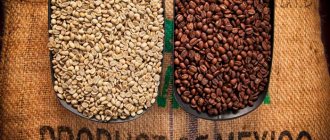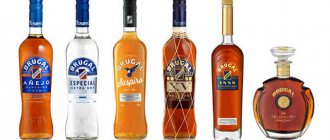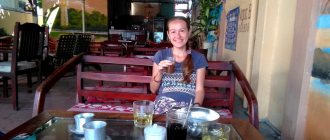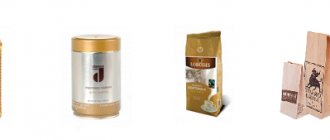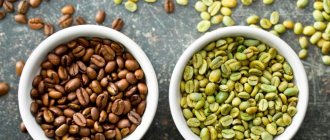Drink made from espresso coffee and brown sugar
Cafe Cubano
| Alternative names | Cuban coffee, Cuban espresso, cafecito, Cuban pool, Cuban shot |
| Type | Drink |
| Place of origin | Cuba |
| Main Ingredients | espresso, demerara sugar |
| |
Cafe Cubano
(also known as
Cuban espresso
,
Cuban coffee
,
cafecito
,
Cuban draw
, and
Cuban shot
) is a variety of espresso that originated in Cuba. Specifically, this refers to a shot of espresso that is sweetened (traditionally natural brown sugar shaken with the first and strongest drops of espresso).[1] However, the name is sometimes used to refer to coffee-based drinks that contain Cuban espresso as the main ingredient, such as Cafe Con Leche.
Drinking cafe Cubano
remains an important social and cultural activity in Cuba and the Cuban-American community, especially in Miami, Tampa and the Florida Keys.[2][3][4]
Preparation
Traditional Cuban coffee is prepared using a darker roast, typically an Italian or Spanish roast. Cafe Bustelo, Cafe La Llave and Cafe Pilón are popular. It can be prepared using an electric espresso machine, but is usually prepared using a moka pot.[1][5]
Either part or all of the espresso is stirred vigorously with a spoon until a creamy foam called espuma or espumita forms.[6][7][8] The heat from the coffee brewing process will hydrolyze some of the sucrose, thereby creating a sweeter and slightly more viscous result than simply pulling or adding sugar at the table.[9]
Origin story
Coffee seedlings were brought to Cuba in the 18th century from Haiti. All trees were planted and carefully looked after. All cultivation requirements were fully complied with, and then the entire production process was monitored. In Cuba, the soil and warm climate were perfect for coffee trees, and they began to bear good fruit.
Today, Cuban coffee consists of a large number of different varieties of Arabica. Most often, blends from different varieties are exported, so outside of Cuba it is quite difficult to find a drink from one variety. In order for people to immediately understand what kind of product this is, the label “Cubita coffee cubita” is placed on the packaging.
What is so remarkable about Cuban coffee? Why do true gourmets and spoiled connoisseurs of this drink love it so much? The secret of taste and amazing aroma is this:
- When growing trees, they are given a lot of attention and careful care so that they can grow and produce a good harvest;
- Coffee beans are freed from pulp and shells using a special technology that causes the least harm to the product;
- Each grain is carefully selected before it goes into packaging. Here calibration takes place both in size and in the presence of chips and cracks;
- The degree of roasting is the strongest. This gives the drink that same strength and richness;
- The roasted grains are vacuum packed, but the shelf life of the product is still not long.
In order to evaluate this product and decide whether you like it, you need to purchase Cuban coffee beans at least once and prepare the drink yourself.
Cuban coffee beans are high-quality Arabica of various varieties
The production of Cuban coffee can be described in the following stages:
- Ripening of grains. So, from the beginning of flowering to the complete ripening of the product, about 7 months will pass;
- Collection. It is carried out every week, packing raw materials into bags and sending them to production;
- Cleaning grain from pulp and shell. Special machines do this;
- Fermentation. By doing this, the viscosity of the grains is removed and they become dry;
- Drying. The grains are scattered in areas where there is a lot of sun, and then dried using special equipment;
- Cleaning. At this stage, foreign impurities are removed;
- Grain selection. They are calibrated using a special apparatus that distinguishes the diameter of the grains;
- Checking the finished grain for moisture and defects;
- Roasting and packaging of grain.
Variations
Cortadito is a standard shot of espresso infused with milk steam. The ratio of espresso to milk can range from 50/50 to 75/25. It is similar to the cortado served in other Latin American countries, but pre-sweetened.[10][11][12]
Café con leche, or “coffee au lait,” is espresso (without sugar) served with a cup of hot or steamed milk. Espresso, which is usually served separately from coffee, is poured to the desired darkness into a cup of hot milk and then stirred. This is a traditional Cuban breakfast drink served with pieces of buttered toast. Cuban bread.[13][14][12]
Colada
it's 3-6 shots of Cuban espresso served in a Styrofoam cup along with a small plastic demitasse. This is a to-go form designed for sharing. This is common in Cuban communities.[15][16]
Cuban coffee growing regions
Nowadays, coffee in Cuba is grown in mountainous regions: Sierra Maestra, Escambray, Guaniguanico, Nipe Sagua Baracoa.
In the Sierraa Maestra mountains the altitude ranges from 1000 to 1200 meters. The harvest takes place from July to December. The varieties grown here are Typica, Bourbon, Caturra, Catuai and Catimor.
In the Sierra del Escambray mountains the altitude ranges from 350 to 900 meters. The harvest is harvested from July to December. The coffee varieties grown here are Typica, Bourbon, Caturra, Catuai and Catimor.
In the Sierra Del Rosario mountains the altitude ranges from 300 to 550 meters. Currently, the fewest coffee varieties grown here are Typica, Bourbon, Caturra, Catuai and Catimor. The harvest takes place from July to December. A nature reserve is organized in this area, protected by the state.
In mountainous areas, coffee trees grow on steep slopes. This makes it difficult to collect coffee beans. The presence of a favorable climate and fertile land allows us to grow some of the best Arabica varieties in the world. This allows you to get good yields without chemical fertilizers.
coffee in the Escambray mountains
drying coffee in the sun
Recommendations
- ^ a b
“How to make Cuban coffee - recipe from Cubano Cafe |
MokaBees." MokaBees • Coffee recipes and instructions
. 2015-06-19. Retrieved 2019-02-06. - Lisa Simundson (2001). Miami and Florida Keys
. Hunter Publishing, Inc., pp. 24–. ISBN 978-1-55650-913-1. - Bob Brook (September 1, 2007). A family-friendly guide to coastal Florida: St. Augustine, Miami, Keys, Panama City and all the hot spots in between!
. Adams Media. p.104–. ISBN 978-1-60550-239-7. - Sarah Hull; Stephen Keeling (11 October 2012). Florida Travel Guide
. Rough guides. page–. ISBN 978-1-4093-5999-9. - Lindgren, Glenn M. (2004). Three guys from Miami cook Cuban
. Gibbs Smith, Publisher. paragraph 2. ISBN 158685433X. OCLC 54677627. - Ana Sofia Pelaez (October 28, 2014). The Cuban Table: A Celebration of Food, Flavors and History
. St. Martin's Press. P. 45–. ISBN 978-1-4668-5753-7. - Stephen Otfinoski (September 2009). 1990s to 2010
. Marshall Cavendish. P. 21–. ISBN 978-0-7614-4625-5. - Catering business
. Catering business. October 1999 - "Espresso vs. Cuban coffee." J. Martinez & Company - Coffee Merchants
. April 24, 2012. Archived from the original on October 22, 2022. Retrieved May 20, 2016. - Susan Zimmer (February 25, 2014). I Love Coffee!: Over 100 Easy and Delicious Coffee Drinks
. Andrews McMeel Publishing, LLC. P. 213–. ISBN 978-1-4494-6011-2. - Ted Henken (October 29, 2013). Cuba
. ABC-CLIO. P. 372–. ISBN 978-1-61069-012-6. - ^ a b
Ana Quincoces Rodriguez (October 23, 2012).
Sabor!: A Passion for Cuban Cuisine
. Launch Press. P. 326–. ISBN 978-0-7624-4889-0. - Daniel Young (March 11, 2009). Coffee Love: 50 Ways to Drink Java
. John Wiley and Sons. P. 51–. ISBN 978-0-470-28937-2. - Victoria Shearer (20 November 2012). The Florida Keys Cookbook: Recipes and Heavenly Dishes
. Globe Pequot Press. P. 271–. ISBN 978-0-7627-9084-5. - Stephen Raichlen (January 11, 1993). Miami Spice: Florida's New Cuisine
. Publishing. page–. ISBN 978-0-7611-6439-5. - Jose Garces (November 19, 2013). The Latin Road Home: Savor the Dishes of Ecuador, Spain, Cuba, Mexico and Peru
. Lake Isle Press. pp. 322–. ISBN 978-1-62921-343-9.
Coffee | ||
| Themes |
|
|
| Production |
| |
| Variety and varieties |
| |
| Components |
| |
| Preparation |
| |
| Coffee drinks |
| |
| Lists of organizations |
| |
| Life style |
| |
| Spares |
| |
| Service vessels |
| |
| Miscellaneous. |
| |
| ||
Types of coffee - put on shelves
In this article we would like to outline the general principles for naming coffee varieties. We would like to note: the type of coffee is, for example, Jamaica Blue Mountain; Arabica or Robusta is a type of coffee.
The main criterion for the diversification of coffee varieties is the geography of their growth. That is, the first point in the name of any type of coffee is the country of origin: Uganda Robusta, Costa Rica Tarrazu, Yemen Matari. There are exceptions: Monsoon Malabar, for example, which is known to be harvested in India, or Kopi Luwak, which is known to be harvested in Indonesia (although recently this is no longer the case - see our article "The most expensive coffee in the world"). This practice can be called including a unique identifier in the name of a coffee variety. Another example is Brazil Bourbon, where the unique identifier is the variety of coffee.
So, so far we have built the following scheme for naming a coffee variety: country of origin + unique identifier. We would like to immediately note that the obligatory point in the name of a coffee variety is essentially only the country of origin. All other points are optional, but not mandatory.
Not long ago, the trend of additional geographical denomination of coffee varieties began to gain momentum, that is, the identification of additional regions within the country: Costa Rica Tarrazu (and not Tres Rios), Ethiopia Irga Cheffe (and not Sidamo), Yemen Matari (and not Sanani). In this case, the unique identifier can be the name of the farm: for example, Costa Rica Tarrazu La Pastora.
Next in the name of the coffee variety is technical information: growing height, processing method and grain size. For the meaning of this information, see our article “From Berry to Cup.” This information is coded differently depending on the country of origin of a particular coffee variety: Colombia Supremo, Guatemala SCB, Kenya AA. Let's look at these notations.
The height of growth of a coffee variety is indicated by the following designations: HB/SHB and HG/SHG, adopted in Central America. HB (Hard Bean) and SHB (Strictly Hard Bean) are used in Costa Rica and Guatemala, while the terms HG (High Grown) and SHG (Strictly High Grown) are used for Honduras, El Salvador, Nicaragua and Mexico.
HB and HG imply a growing height of 1200 to 1400 m, and SHB and SHG - from 1400 m.
Why is the growing height of a coffee variety important?
...but the 18th screen is much larger.
The higher coffee grows, the less oxygen there is in the atmosphere, and accordingly, the slower the ripening process occurs - as a result, the bean becomes the densest. Have you ever seen small crooked cows living in the mountains at an altitude of three kilometers? Coffee trees are the same. The densest beans gain the maximum amount of acidity, which is responsible for the taste characteristics of coffee, and therefore coffee that grows higher is valued more (hence the term “high-mountain”).
The size of the coffee bean is indicated by the following designations: for Colombian coffee varieties - Supremo and Excelso, for African coffee varieties, except Ethiopia (Kenya, Rwanda, Tanzania, Burundi, Malawi) - AA, A, AB, B, C. Regarding the size Coffee beans I would like to comment on two points. Firstly, the size of the coffee bean is called screen (from the English screen - screen, sieve). A screen is a sieve with holes of a certain diameter through which coffee beans are sifted to be sorted by size.
Of the designations we mentioned for specific varieties of coffee, Supremo is screen 17-20, Excelso is screen 15-16; AA – screen 18.5-20, A – screen 17-18, B – 15-16, C – 14.
| Screen | Mm |
| 20 | 8 |
| 19 | 7.5 |
| 18 | 7 |
| 17 | 6.75 |
| 16 | 6.5 |
| 15 | 6 |
| 14 | 5.5 |
| 12 | 5 |
Secondly, the effect of bean size on the taste of coffee is not as obvious as the effect of growing height. If a variety is usually ranked by size (for example, Uganda Robusta, Monsoon Malabar, Brazil Santos, Kenya), then often, but not always, larger size gives better taste: Santos 19 is better in taste than Santos 17, Kenya AA - Kenya C, but, for example, Uganda Robusta 17 is often better than Uganda Robusta 18, which is rather an exception to the rule. But! If a coffee variety is not customarily sorted by size, this does not mean that it is worse or cheaper! For example, Yemen or New Caledonia, which is the same price as Jamaica Blue Mountain, the grains of these varieties are small, but the taste characteristics of the cup are absolutely amazing. Conclusion: in the coffee world, size doesn't always matter!
The grain size is also indicated by the grade parameter for coffee varieties from Vietnam, Peru, and Jamaica Blue Mountain. For coffee varieties from Ethiopia, the grade indicates the processing method: 1 and 2 are washed processing, 3-5 are natural.
So, the name of a coffee variety is based on the following template: country of origin + additional geography + unique identifier + technical information. The use of all the terminology for the name of a coffee variety is appropriate in the professional community, but for the end consumer we consider these terms to be heavy-handed. That’s why we simply call coffee: Yemen, Costa Rica, Uganda Robusta. However, any coffee connoisseur will find its full name on our coffee variety page in the online store.
You can read about such an important taste characteristic of each variety as sourness in our article “Sour Coffee”, and the specifics of roasting are disclosed in the article “Roasting Coffee”.
